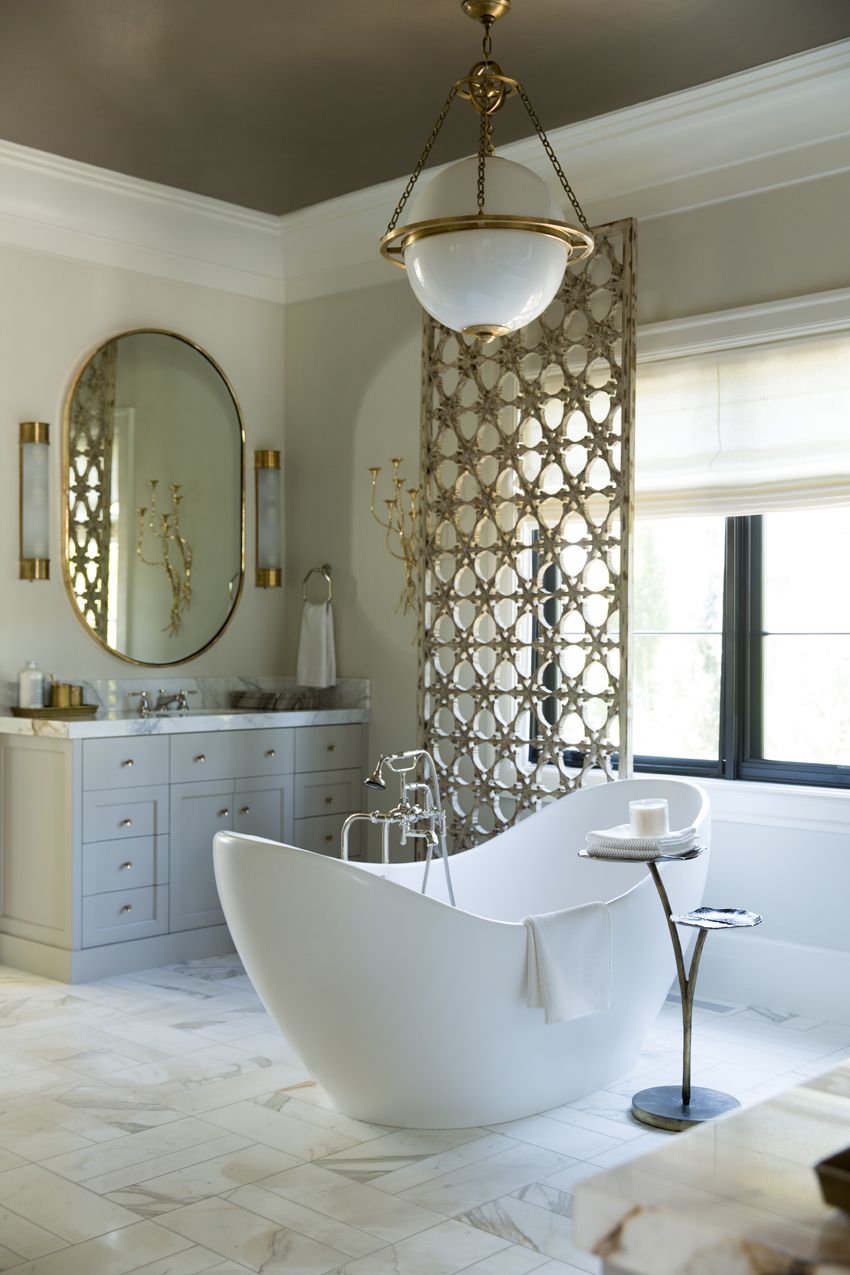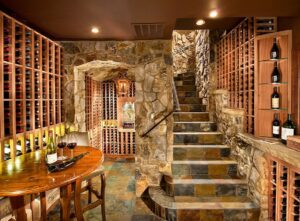
Classic and modern styles are one of the most sought-after combinations today. Why is it so loved? And how to properly combine the old and the new?
By blending traditional and contemporary design elements into interiors, you can create an eclectic living image of a home with history. But we must do this carefully and deliberately to prevent imbalance and the effect of too much. The primary condition for the mix is to choose a leading style, which will become the basis of the composition and the background for further experiments. We will tell you how to do it better and share practical tips from the pros.
In the material, you will find answers to questions:
- what is the expectation in classic and modern interior styles?
- Why is their combination so popular?
- What is the mix of classical and contemporary suitable for?
- How to combine palette and furniture from different eras?
- What is important to know when choosing finishes and decor items?
Features

The classic style of the interior, formed in the 16-18 centuries, and today does not lose its relevance due to aristocracy, sophistication, and severity. There is no place for artificial and cheap materials in it. You can select accessories with an emphasis on historical or cultural value.
The modern style or contemporary was born much later – in the second half of the twentieth century. It took the benchmark for a functional and practical space with no frills. Minimalism, modern, hi-tech, and eco-style contributed to its formation. Unlike the classic trend, contemporary allows inexpensive artificial materials, simple and functional furniture, and minimalistic decor.
Despite the difference of almost four centuries, these two directions still have a lot in common: pastel light shades, a single color scheme, clear lines, the desire for symmetry, elegance, and spaciousness. Unifying features will be the starting point for style combinations.
Winning Combination

The symbiosis of classics and contemporary gave rise to a new independent direction in design – neoclassicism or modern classics, which is in great demand today. It interprets the straightforwardness and simplicity of modern style while retaining the luxury and sophistication of a classic style. There is a lot of space, light, and air in such interiors.
Fans of bold experiments, bright palettes, and unusual combinations are unlikely to appreciate neoclassicism. Instead, it is for those who:
- Loves precision and tradition but strives to keep up with the times,
- Wants to highlight the status and magnificence of the interior without unnecessary old-fashionedness,
- Dreams of a soft, calm, and elegant environment without daring designer impromptu,
- Plans to create a functional and discreet interior with a touch of history.
Endeavoring for Harmony

Like the classic style, contemporary works best in spacious, open-plan spaces with precise rectangular or square shapes. We must consider that space should smoothly flow into one another with a compositional center – the living room. Arches, columns, and semi-arches for zoning in classic architectural elements: They can create by using modern and inexpensive drywall, MDF, and plastic.
We should not overload the room with pieces of furniture and decor. Both styles strive for space, order, and maximum illumination. We can achieve it by panoramic glazing, light palette, and laconic furnishings around the perimeter. Essential rules of neoclassicism are strict symmetry and restraint in everything: from the organization of space to ornamentation in the decor.
Cool Palette

Both styles do not welcome striking and colorful combinations in favor of a calm and neutral palette with a predominance of light monochrome shades. But in order not to get bored with pure white, it is better to prefer shades close to it: cream, beige, gray-blue, mint, light gray, and powdery.
We will dilute the pastel range with chocolate, golden, bronze, earthy, juicy green, dark blue, black, and even bright red colors. Accents are easier to set with graphic and contrasting patterns on textiles or wallpaper. But it is essential to stop at 3-4 shades. Otherwise, the interior will lose its severity and respectability.
Finishing Options

Suppose the classics are to choose as the leading style. In that case, the emphasis is on exquisite finishing in light colors with architectural elements of the Renaissance: moldings, boiserie, arches, pilasters, and columns. As finishing materials, you should pay attention to paint, decorative plaster, plaster, wood and glass panels, wallpaper on silk or non-woven base. At the same time, pieces of furniture and accessories should be distinguished by straight lines and laconicism, characteristic of a modern style.
When these both styles come, it can make the broad background of the interior as neutral and straightforward as possible. Classic stucco molding at the junction of walls and ceiling will add texture and increase the depth of straight surfaces. We can accentuate one or two walls with patterned wallpaper in the Renaissance style.
When two styles collide in an interior, we recommended using neutral flooring. Otherwise, it will knock the floor out of the general pastel range. Usually, we can use laminate, parquet, or solid boards in warm colors. The neutrality of the shades is made up for by the rich texture: Persian carpets, skins, sisal, and wool canvases.
Aristocratic Light

A significant touch of the classic style is the luxurious multi-tiered pendant chandelier. It will effectively dilute the neutral background of contemporary dance, giving the necessary solemnity and status. But it is worth remembering that the distance of the chandelier above the floor must be at least two meters. Almost all modern luminaires can be combined with it – from spot spots to industrial track tracks.
If more classics prevail in the design of the apartment, then the creation of the central lamp can be more straightforward and more concise. As local lighting, you can choose sconces in the form of classic candlesticks or floor lamps with fabric lampshades. LED strip running along the perimeter of the ceiling or furniture will emphasize the severity and clarity of the lines.
Uniform Furnishings

An interior with antique furniture in one part of the room and everyday objects in the other will only emphasize the difference in styles rather than unite them. It is essential to evenly combine furniture from different eras in space, taking into account the size of the room and the dimensions of other items. A sofa with graceful legs, a high back, and velvet upholstery will make friends with a laconic leather or textile armchair. And an antique table with skillful carvings will soften the severity and straightforwardness of a modern modular sofa.
The prominent colors for furniture “a la neoclassic” are cappuccino, chocolate, beige, black, gray, silver, white and gray-blue. We can easily combine upholstery materials. The main thing is not to get out of the general color scheme and concept. But a little contrast will not hurt: for example, laconic modern wardrobes or shelves in dark colors will look spectacular against the background of a classic light finish.
Order Fabrics

We can supplement panoramic windows with minimalistic trims and frames with long draped curtains made of expensive fabrics (taffeta, satin, velvet). If classics dominate the room, it is better to hang the curtains strictly and monochrome with a laconic design. The sophisticated fringe or tassel tie is another nod to the Renaissance.
Choosing the right cushions and bedding is a winning way to combine the two styles. It will be enough to use one or two pillows with geometric or floral patterns. To avoid unnecessary variegation, Textured fabrics in dark tones add warmth to light, neutral spaces.
Functional Accessories

There shouldn’t be many of them. Not only the aesthetics of decor items is essential, but also practicality. For example, a single plant complements a vase, wall and floor mirrors in exquisite frames, candlesticks in a classic style, or a retro clock. Live plants in pots stylized as ancient Greek ceramics will add special solemnity and comfort.
The fireplace remains the decorative center in neoclassical interiors, as it was several centuries ago. Ultramodern pendant models will not work. The strict forms and restraint of design can complement classical stucco moldings made of bronze or gilding.
Paintings with massive carved baguettes can weigh down walls rich in architectural elements. Better to leave a wide white border around the image and tuck it into a plain black frame. Expressive abstract art will add dynamics and flavor to the interior, while antique plates and plaster medallions will add nostalgic charm.
Ideas for Decorating Rooms
Hallway:

If the height of the ceilings allows, then already at the entrance to the house, you can hang a spectacular classic chandelier. Then the rest of the decor in the hallway should remain discreet. A large mirror in a laconic frame and light wallpaper will emphasize the volume and height of the room. An elegant bench can become a classic furniture touch.
Dining Room:

The modern dining table complements chairs upholstered in Renaissance fabrics. Alternatively, use traditional furniture and combine it with brutal industrial lighting. Wooden panels on the walls and natural textiles visually warm the austere and cold contemporary.
Bathroom:

Glass, metal, ceramics, and wood are common materials in modern wet areas. One of the trendiest trends is an elegant bathtub with curly legs against a background of plain tiles or concrete. A spacious high room often decorated with a pendant multi-tiered chandelier and an antique armchair.
Bedroom:

The head of the bed can be decor with a massive golden frame and a carriage coupler in the best traditions, but at the same time, the decoration of the bedroom should be modest. We will fill the bed sides with modern cubic bedside tables and minimalist lamps with sleek metal shades.
Kitchen:

We can refresh the traditional kitchen set with modern fittings, accessories, and trendy shades (blue, black, gray). Try adding modern pendant lights above your work area or adding a steel worktop.
Living Room:

Furniture with clean lines, restrained design, and neutral upholstery in warm colors looks good against the background of curly panels, pilasters, and moldings. As an organizing center, choose a classic fireplace and hang over a catchy abstraction by a modern author or a laconic mirror.
Children’s Room:

Instead of bright rainbow colors, you need to choose favor of soft “candy” shades: light blue, mint, pistachio, pink, caramel, peach. A good solution is an air canopy or its imitation at the head of the bed. If the size of the room accommodates both a sofa and a bed, then let one of the types of furniture be in a classic style or a modern one.
Combinations of styles need to be thought out to the smallest detail and balance their impact on each other.






